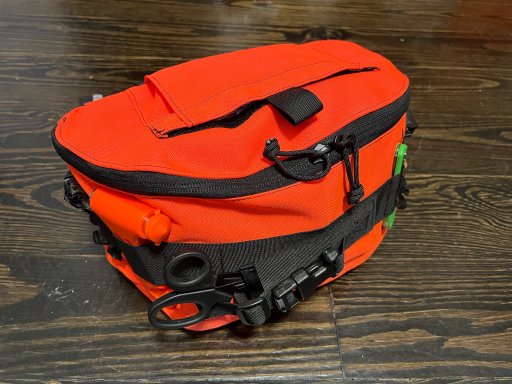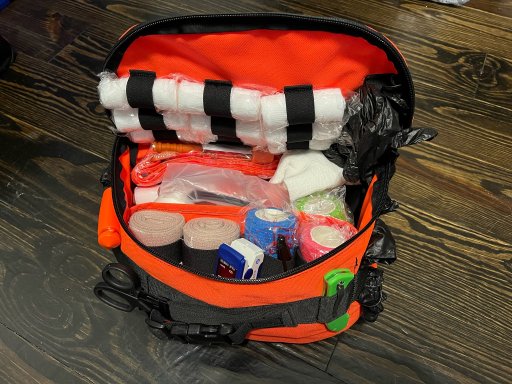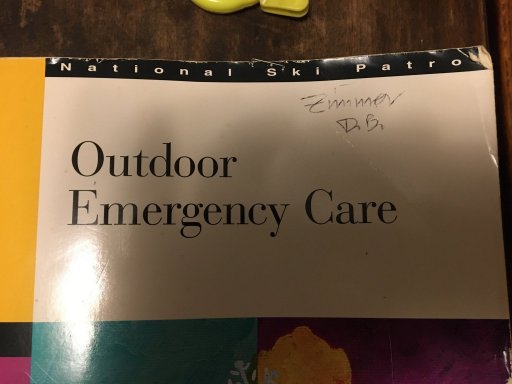
Advocate II
- 1,033
- First Name
- Jack
- Last Name
- Coleman
- Member #
-
30326
- Ham/GMRS Callsign
- K7JDC
- Service Branch
- US Army
Finished compiling my trauma kit. Below are the items I selected with the associated cost.
I wanted to compile a trauma kit to deal with major injuries, typically life-threatening, and to keep someone alive until expert medical care can be reached. I also wanted enough materials for myself, my wife or a few people we may come upon.
For quick access, I have this kit attached to a molle panel on the back of the drivers side seat.
Airway:
CPR Face Shield x 5 - $6.97
Bleeding:
Tourniquet x 2 - $44.00
Israeli Bandage, 6" x 4 - $16.00
Clotting Strips x 4 - $40.00
Trauma Pads (12” x 12”) x 2 - $117.00
Rolled Gauze x 9 - $3.33
Non-adherent dressing x 4 - $6.00
Other:
Gloves x 6 pairs - $1.50
Trauma Shears - $8.15
Window-breaker and Seatbelt cutter - $5.50
Protective Eyewear - $15.00
Ace Wrap x 2 - $6.00
Tape, roll, cloth x 2 - $3.29
Self Adherent bandages x 4 - $6.00
Mylar Thermal Blankets x 4- $6.66
Fingertip pulse oximeter - $22.95
Bag, hip or over shoulder carry - $84.47
Total: $392.82
I also have a separate, First Aid Kit which is intended to deal with very basic, and superficial wounds, like your everyday cuts and scrapes.
This wasn't a cheap project, but it's money well spent IMO. It does give me peace of mind knowing I have these items in the event of an emergency.
Be safe and have fun!
I wanted to compile a trauma kit to deal with major injuries, typically life-threatening, and to keep someone alive until expert medical care can be reached. I also wanted enough materials for myself, my wife or a few people we may come upon.
For quick access, I have this kit attached to a molle panel on the back of the drivers side seat.
Airway:
CPR Face Shield x 5 - $6.97
Bleeding:
Tourniquet x 2 - $44.00
Israeli Bandage, 6" x 4 - $16.00
Clotting Strips x 4 - $40.00
Trauma Pads (12” x 12”) x 2 - $117.00
Rolled Gauze x 9 - $3.33
Non-adherent dressing x 4 - $6.00
Other:
Gloves x 6 pairs - $1.50
Trauma Shears - $8.15
Window-breaker and Seatbelt cutter - $5.50
Protective Eyewear - $15.00
Ace Wrap x 2 - $6.00
Tape, roll, cloth x 2 - $3.29
Self Adherent bandages x 4 - $6.00
Mylar Thermal Blankets x 4- $6.66
Fingertip pulse oximeter - $22.95
Bag, hip or over shoulder carry - $84.47
Total: $392.82
I also have a separate, First Aid Kit which is intended to deal with very basic, and superficial wounds, like your everyday cuts and scrapes.
This wasn't a cheap project, but it's money well spent IMO. It does give me peace of mind knowing I have these items in the event of an emergency.
Be safe and have fun!
Attachments
-
634.5 KB Views: 83
-
687.1 KB Views: 68













